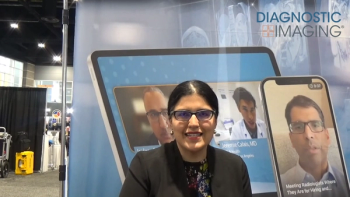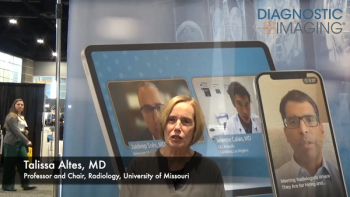
Teleradiology lowers costs, increases efficiency of clinical trial
Teleradiology is playing a significant role in a major three-year international trial focused on sickle cell disease.
Teleradiology is playing a significant role in a major three-year international trial focused on sickle cell disease.
The Silent Cerebral Infarct Multicenter Transfusion (SIT) Trial requires 1880 children with sickle cell disease from 28 pediatric clinical sites in the U.S., Canada, U.K., and France to undergo a screening MRI of the brain to detect the presence of silent cerebral infarct-like lesions. The patients also receive a prerandomized (baseline) brain MRI, as well as an exit MRI.
"The imaging requirements of the SIT Trial call for independent and blinded reading of MRIs by three neuroradiologists at separate academic centers," said Bruce A. Vendt of the Electronic Radiology Laboratory (ERL) at the Mallinckrodt Institute of Radiology.
Vendt described the innovative role of teleradiology in processing and adjudicating the imaging studies in a recent paper (J Digit Imaging 2008 Apr 09 [Epub ahead of print]).
Digital studies obtained across continents are quickly transmitted to radiologists in different locations for interpretation. Each neuroradiologist performs an independent read, saves findings as a presentation state, then enters an ERL-hosted website to complete an electronic case report form.
Prior to the use of teleradiology for processing digital imaging studies for clinical trials, researchers in multicenter trials faced the slow, cumbersome task of acquiring, processing, and shipping hard-copy film - a process that often took weeks.
"The workflow developed by ERL to support the SIT Trial has resulted in an average two-day turnaround from receiving the MRI study to providing results," Vendt said.
The ERL method ensures compliance with the Health Insurance Portability and Accountability Act. Software embedded in the system strips scans of all personal information and adds unique study identifiers.
"This novel strategy helped us minimize the cost of collecting data for the SIT Trial, while at the same time meeting the requirements for timely review of the scans," Vendt said.
Use of a digital reviewing system has not only improved reader productivity but also boosted diagnostic confidence, he said.
The ERL process can easily be adapted to meet the needs of other clinical trials that require the timely review of digital studies by independent readers, according to Vendt.
"Even if time is not a critical factor, the ability of the ERL method to efficiently process digital images while minimizing the workload of radiologists makes it the ideal imaging adjudication solution for a wide range of clinical trials," he said.
Newsletter
Stay at the forefront of radiology with the Diagnostic Imaging newsletter, delivering the latest news, clinical insights, and imaging advancements for today’s radiologists.




























